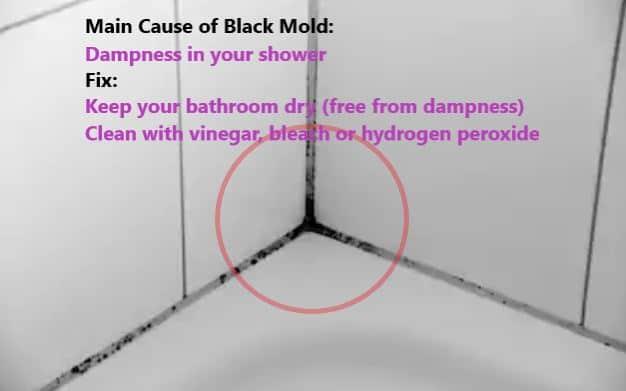Win the war.- byBetter Homes and Gardens
Sharing your shower with mould is not only unsightly, but unhealthy. Mould thrives in damp and humid conditions, which is why it can usually be found lurking in the silicone around your tub or shower, around the drains and, in poorly ventilated spaces, the bathroom ceiling. While prevention - such as regular cleaning and proper ventilation - is the key, it's not always enough. But do not stress, there are other options to rid this pesky invader for good.
The good news is you don’t need to use harsh chemicals to get the job done. In fact, bleach and ammonia only disguise the problem, not solve it, with vinegar to be the best at attacking mould.
Steps
You can use bi-carb with vinegar too if you have a big mould issue on your hands.

Steps
If you tried the cleaning solution but still have black spots in your grout the only way to completely get rid of it is to re-grout the affected area. Use a grout remover to scrape it out until there is no sign of staining.
Remove all the dust then mix up the new grout and spread it over the walls making sure it gets right into the joint. Use a damp sponge to remove as much of the excess as possible, rinsing it frequently. When it’s dry, polish the tiles with a cloth.
Another place where mould can’t be fully removed is in the silicone, especially around the rim of the bath. To replace it, cut out the affected area and pull out as much as you can. Use a razor blade to scrape off any silicone that’s left over or use a chemical silicone remover.
To apply new silicone, first mask either side of the joint with masking tape so you don’t get it where it’s not needed. Squirt silicone into the join then smooth to the edges of the tape with a finger dipped in soapy water. Remove the tape before the silicone forms a skin.
The first step is to reduce the amount of moisture in your bathroom. If you don't have a window you can open each time you shower the next best way to increase ventilation is by installing an exhaust fan. It’s important any new fan is vented to the outside. Ceiling fans that just go up into the roof cavity will just shift the problem elsewhere and possibly make the mould infestation worse.
Secondly, create and stick to a regular cleaning schedule. Mould loves moisture, so each time you use your shower be sure to wipe down the tiles and screen. Doing this will ensure it doesn't make an encore appearance.Plus, your chance to win
Subscribe NowPlus, your chance to win